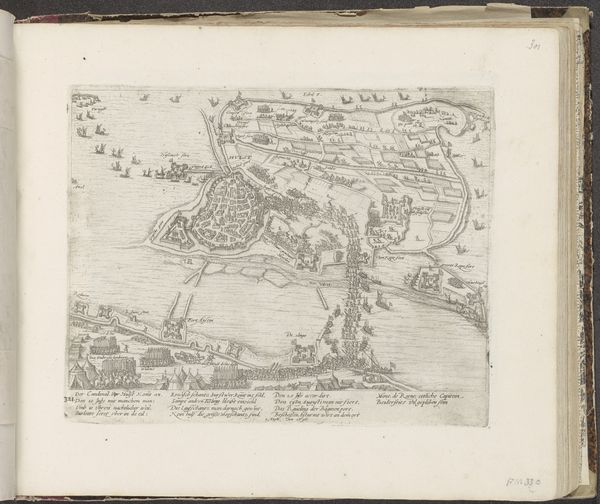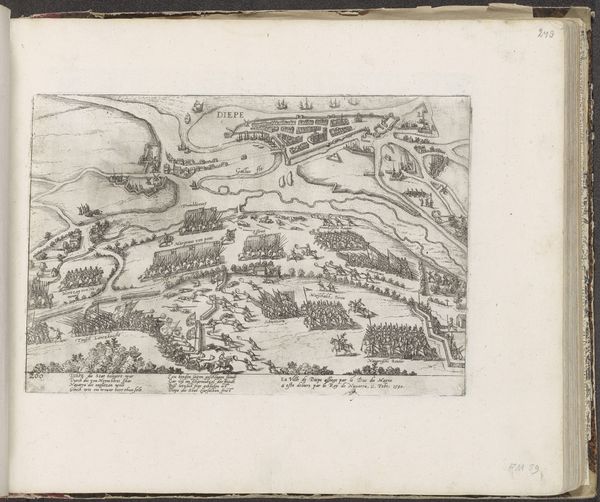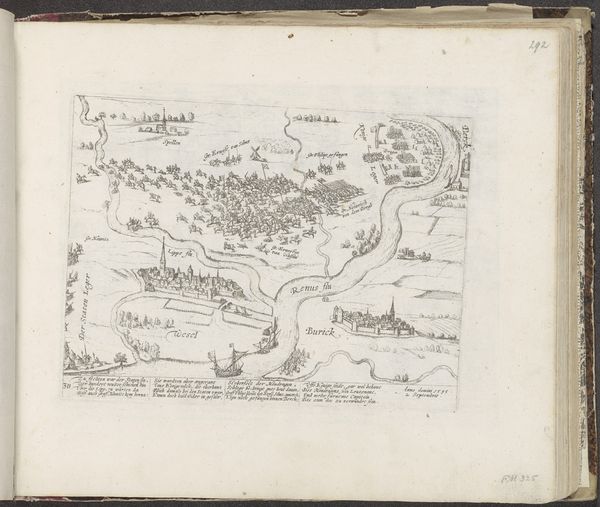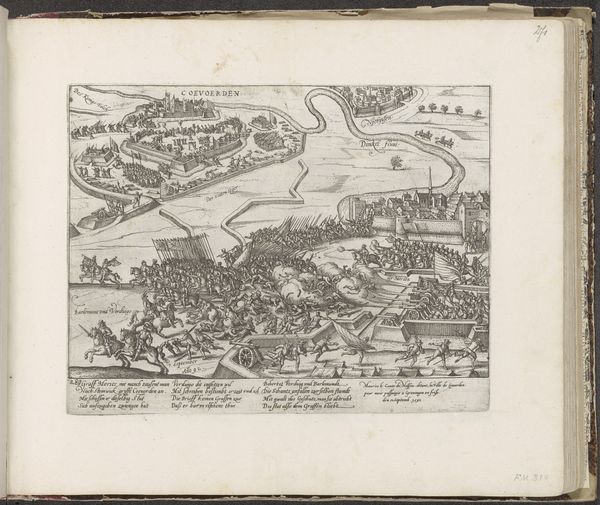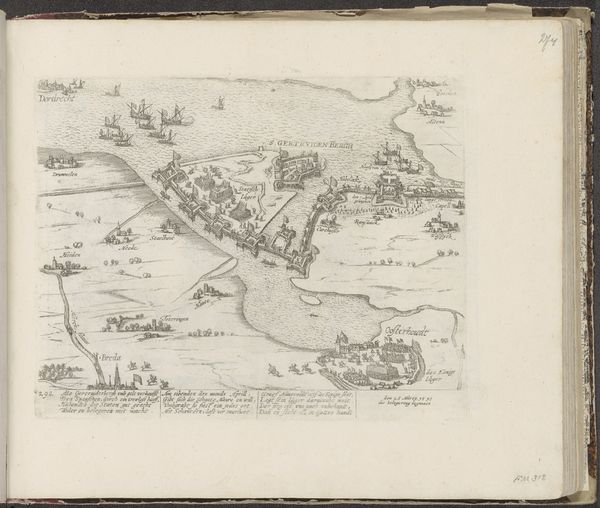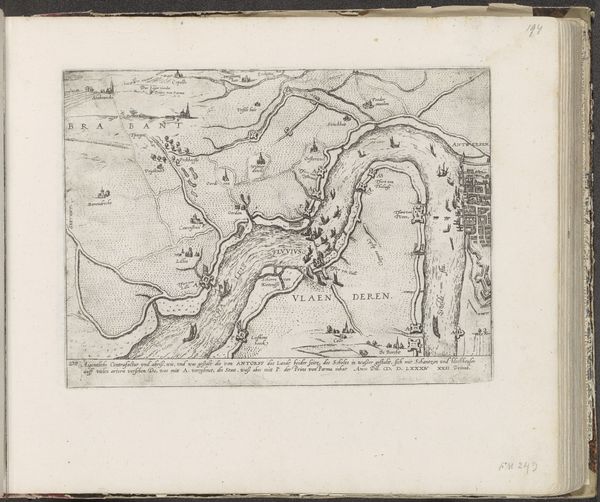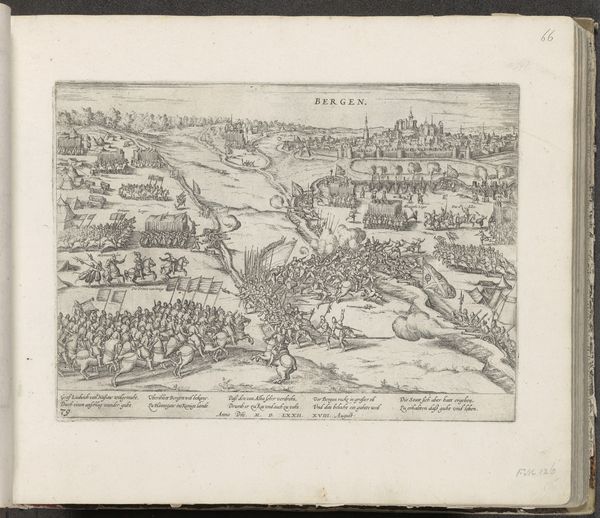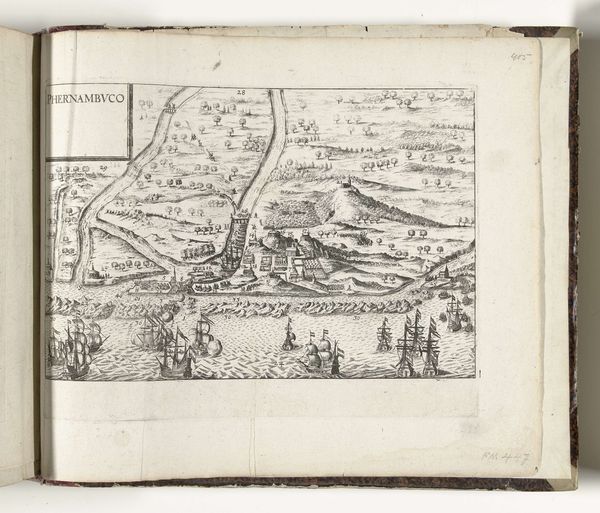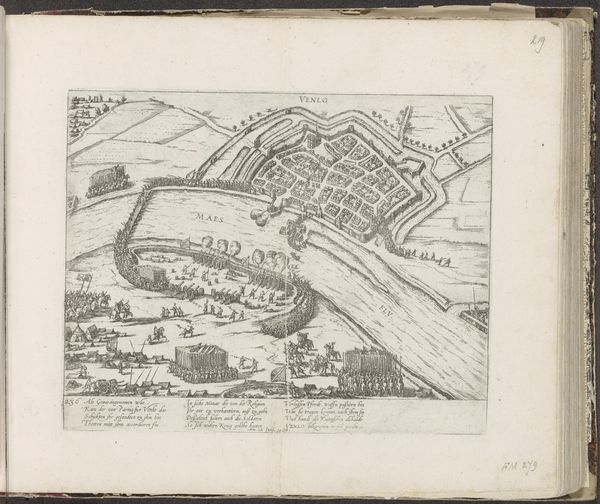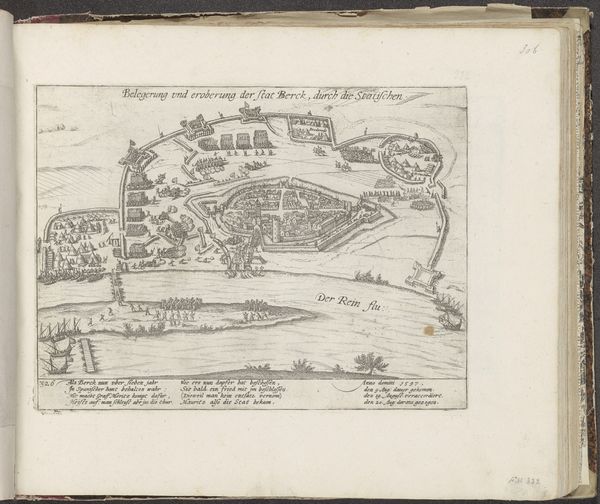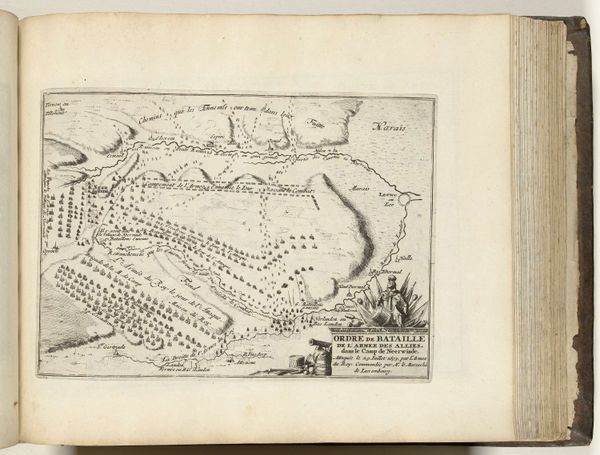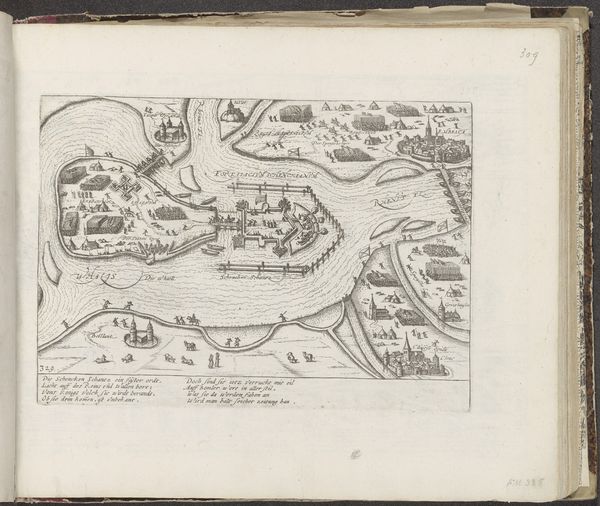
print, engraving
#
medieval
# print
#
landscape
#
cityscape
#
engraving
Dimensions: height 217 mm, width 267 mm
Copyright: Rijks Museum: Open Domain
This print, depicting the Capture of Hulst by the Spanish in 1596, was made by Frans Hogenberg. It is an etching, meaning the artist would have painstakingly drawn an image into a wax-coated metal plate with a sharp needle. The plate was then bathed in acid, which bit into the exposed lines, allowing it to hold ink and transfer the design to paper. The strength of an etching lies in its ability to capture fine details, which are abundant here. Notice the landscape, the architecture, and the figures populating the scene, all rendered with precision. Etchings like this were important, as printed maps became tools of power, shaping geographical knowledge and influencing military strategy. However, the seemingly objective view presented here also serves a particular political agenda, celebrating Spanish conquest. By understanding the material process of etching, and the social context in which this print was made, we can appreciate its aesthetic qualities, and also interpret its historical significance.
Comments
No comments
Be the first to comment and join the conversation on the ultimate creative platform.
